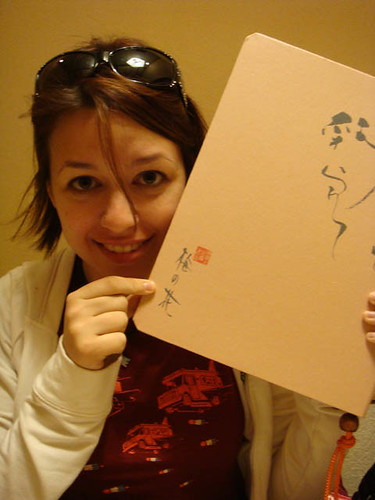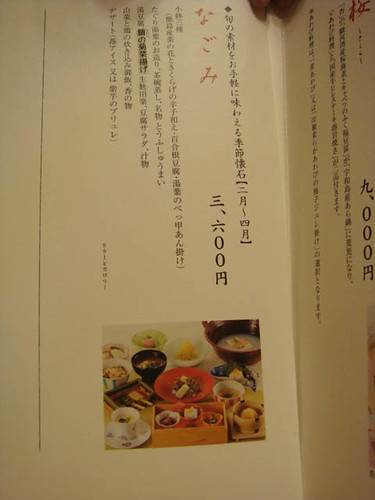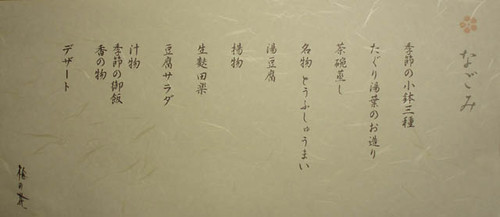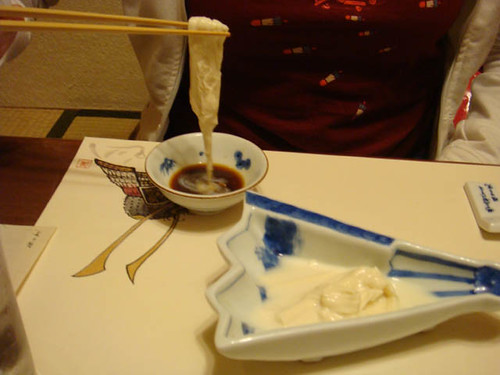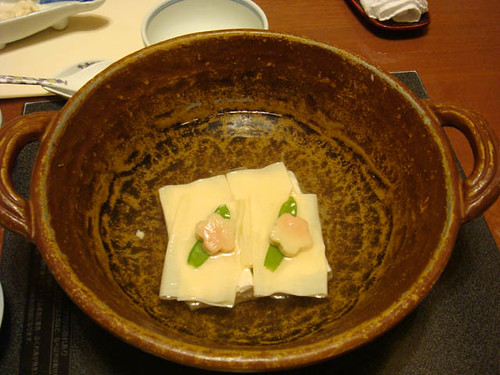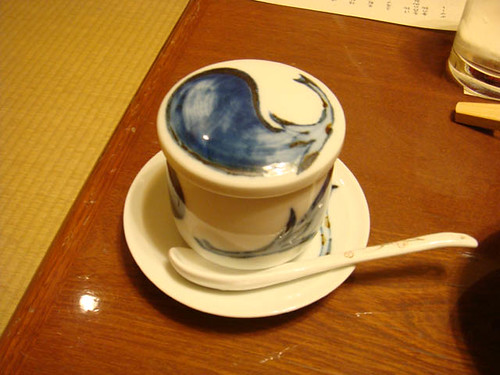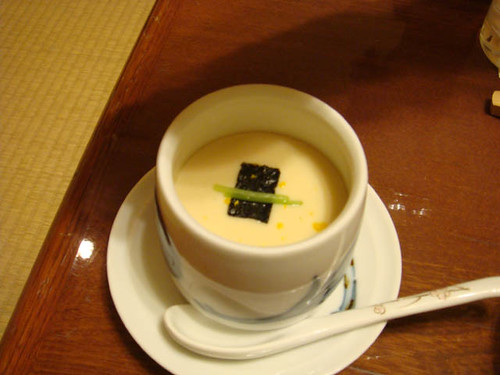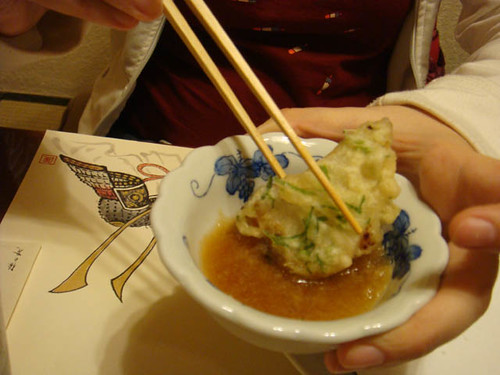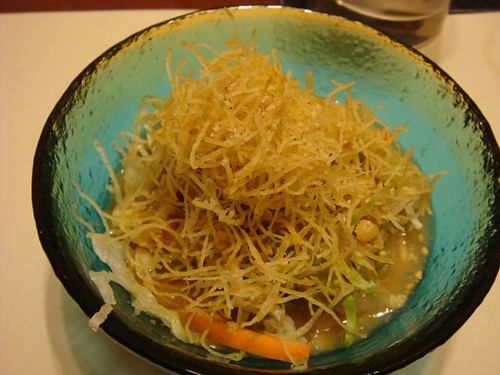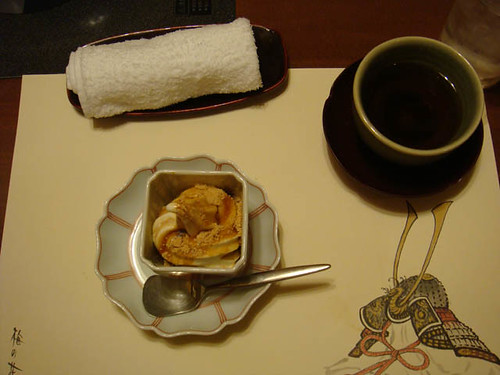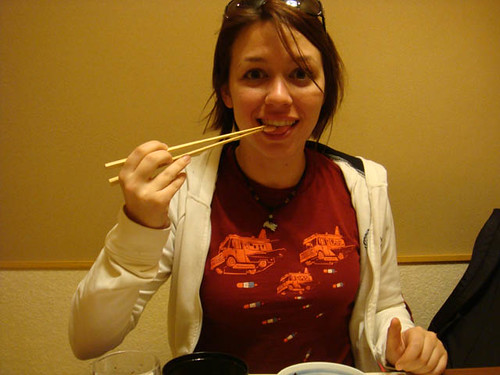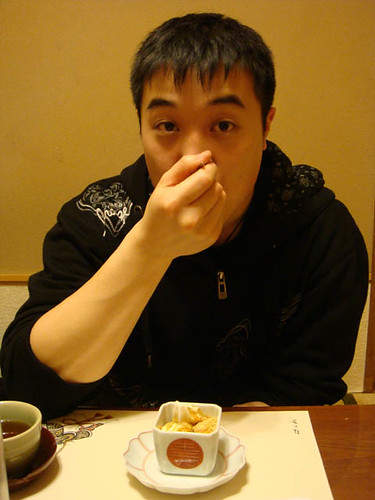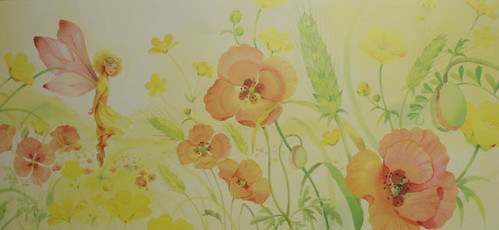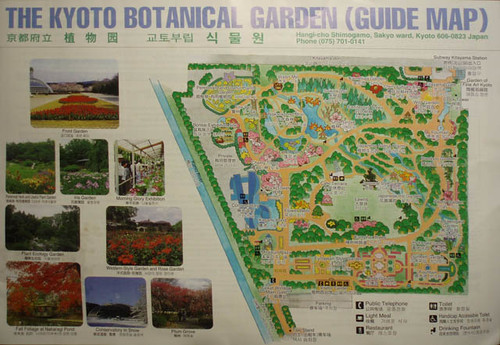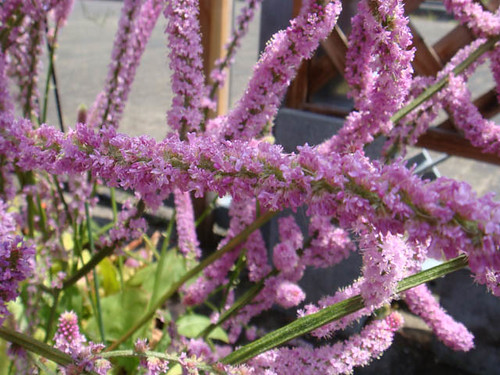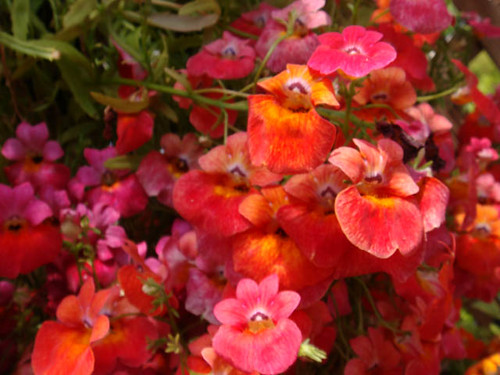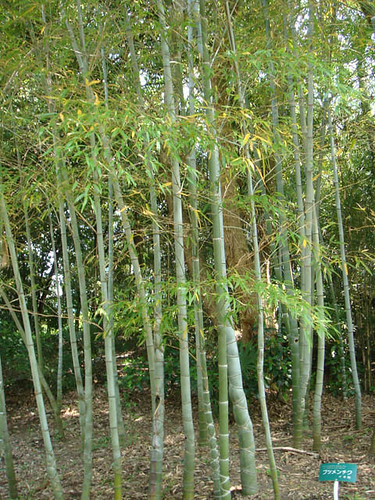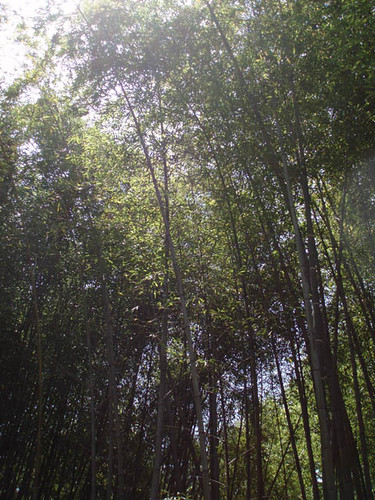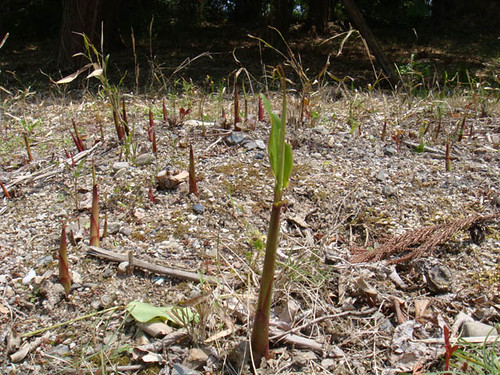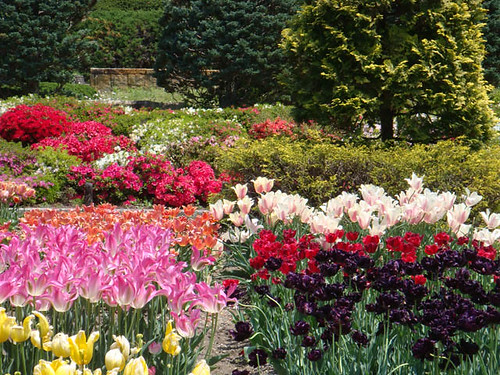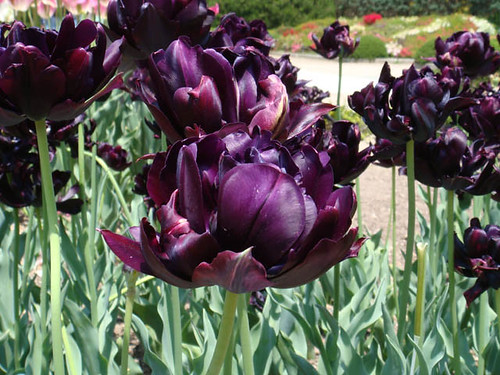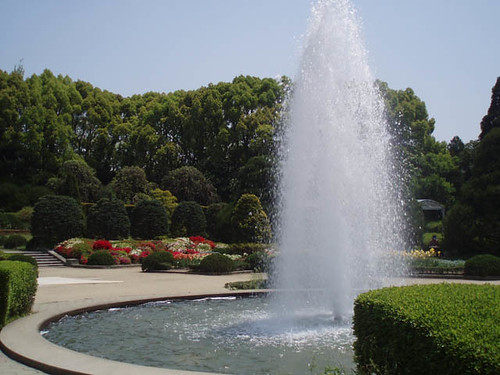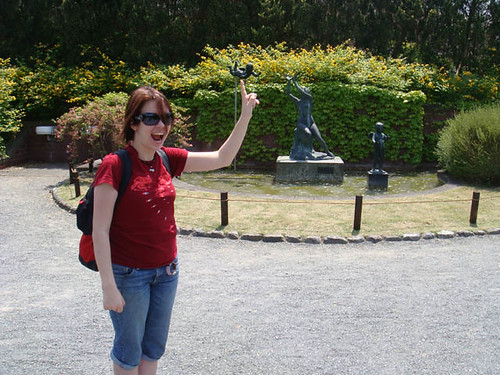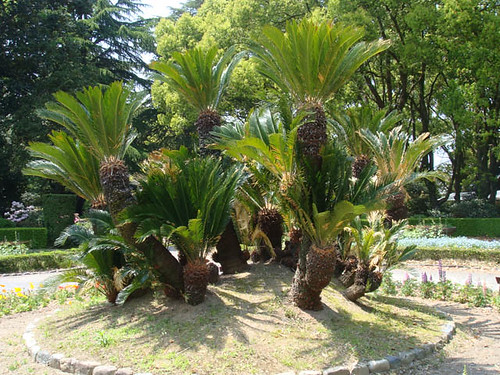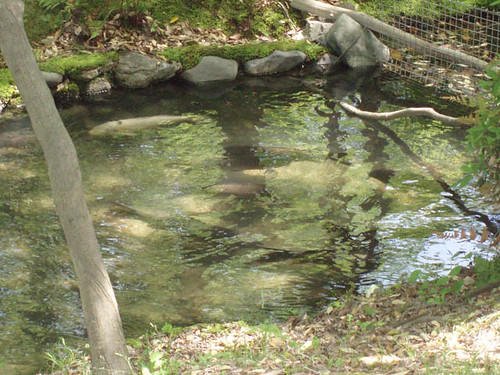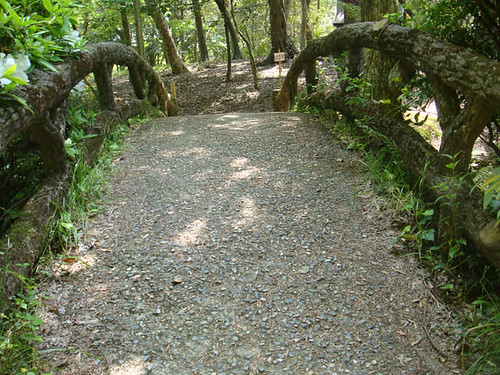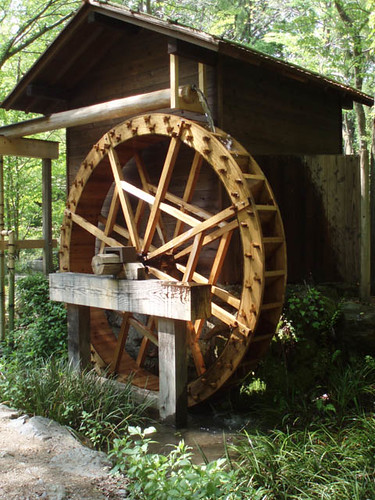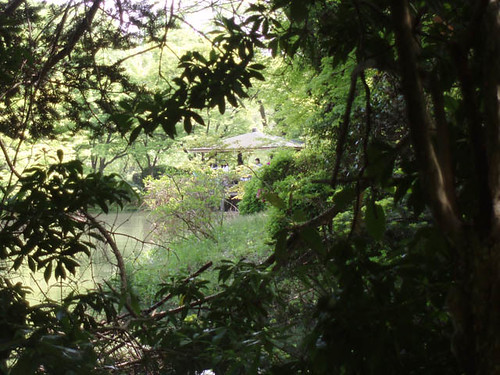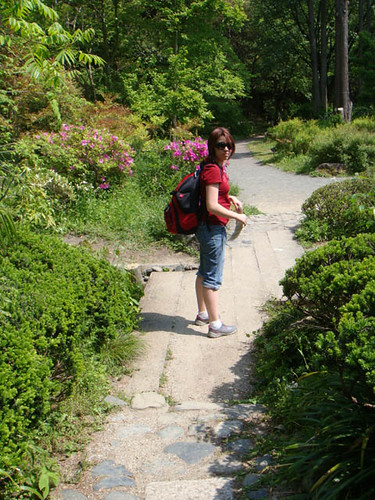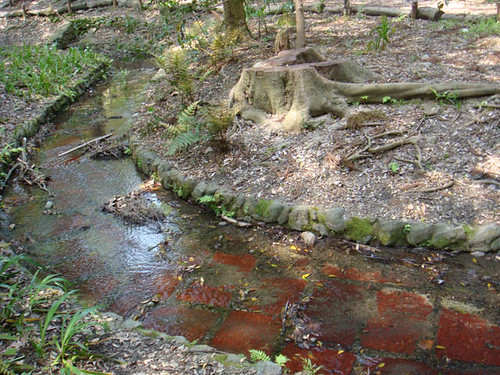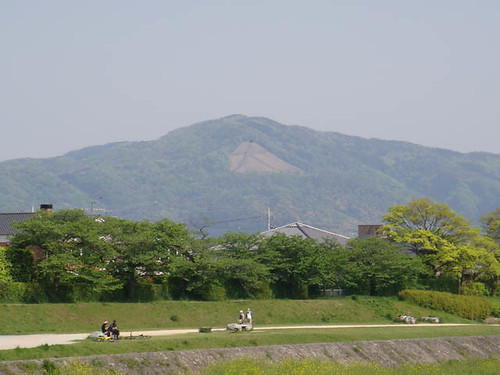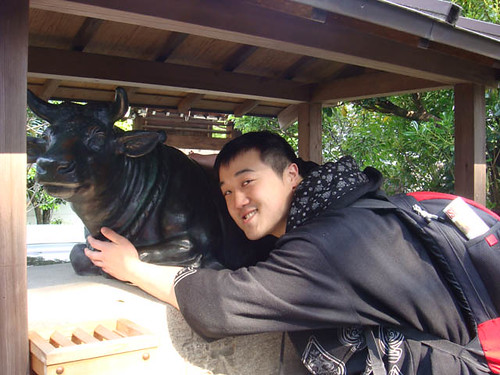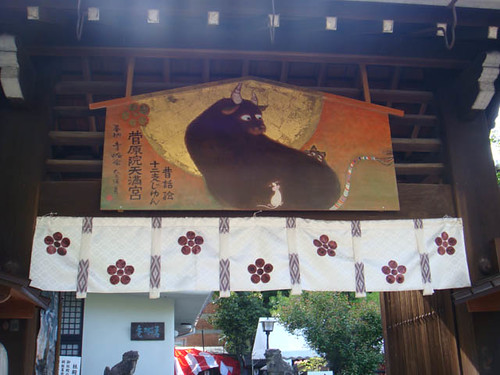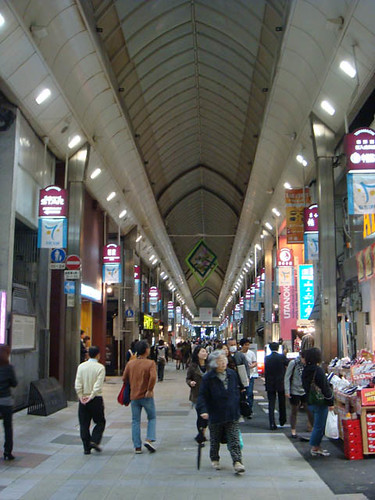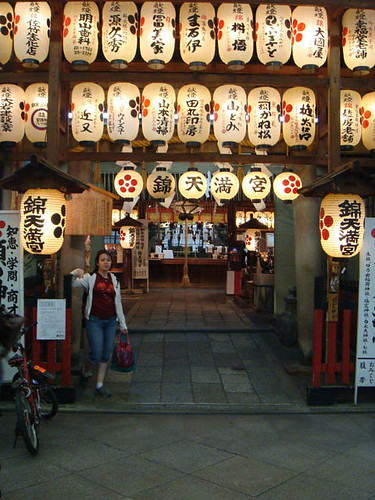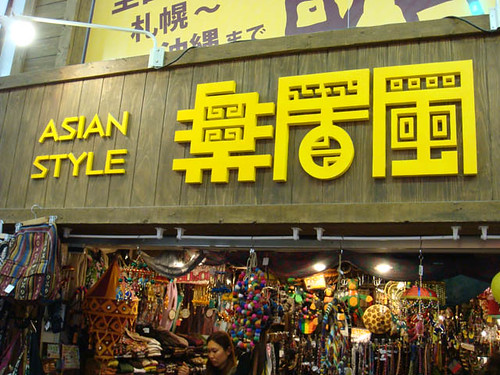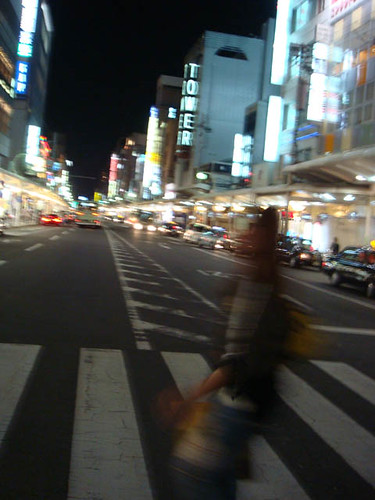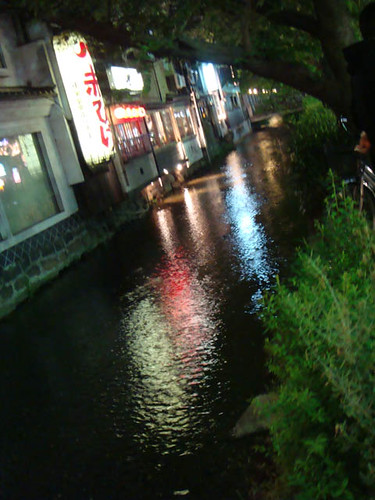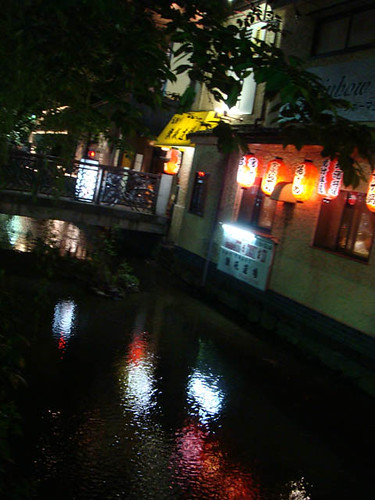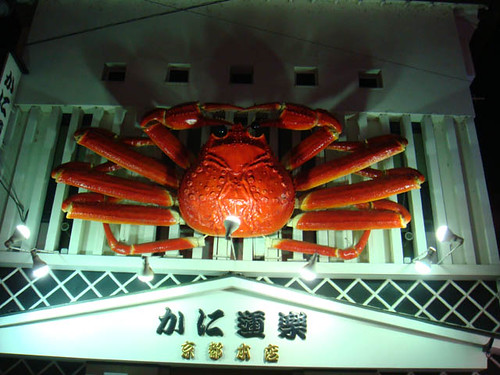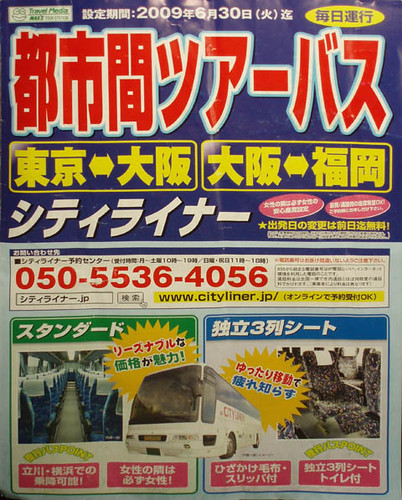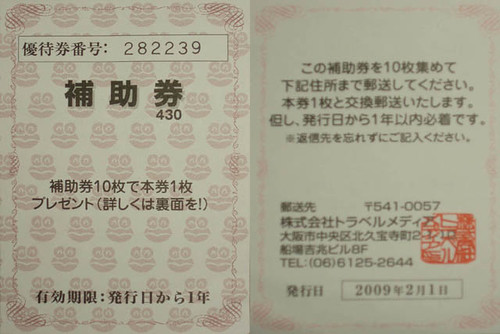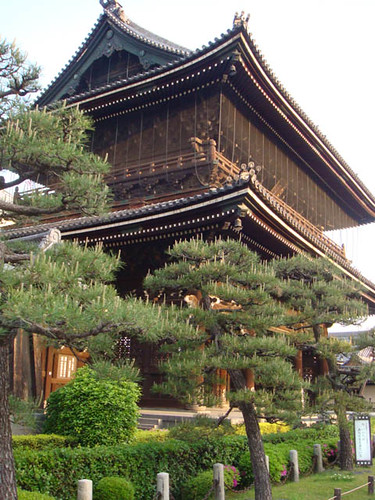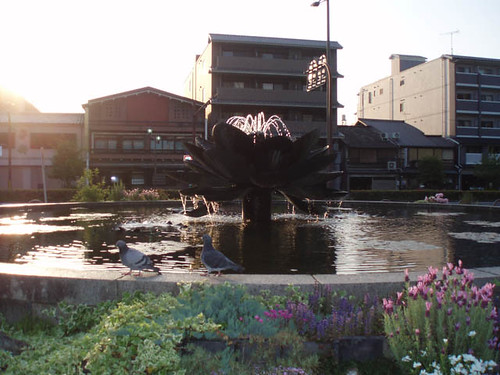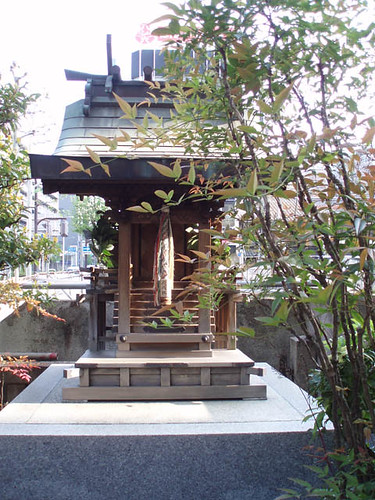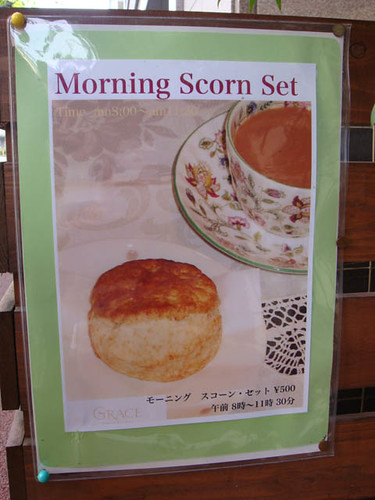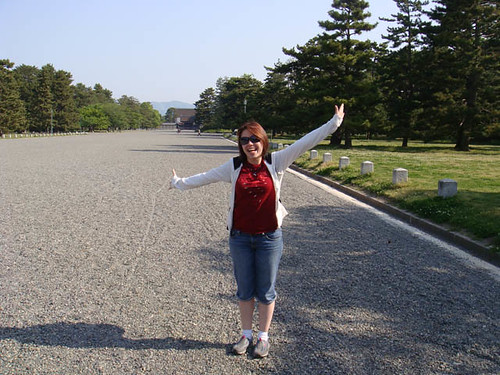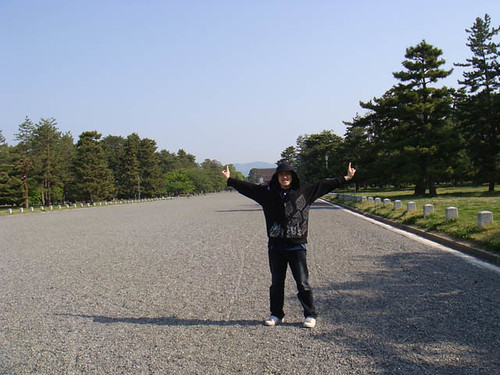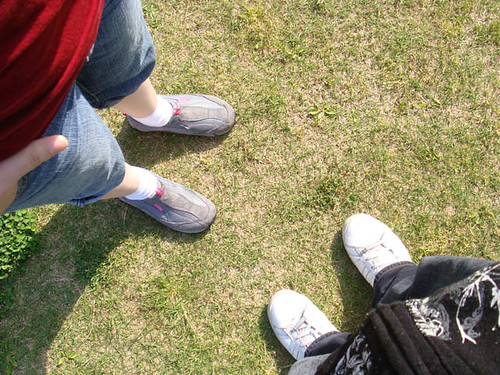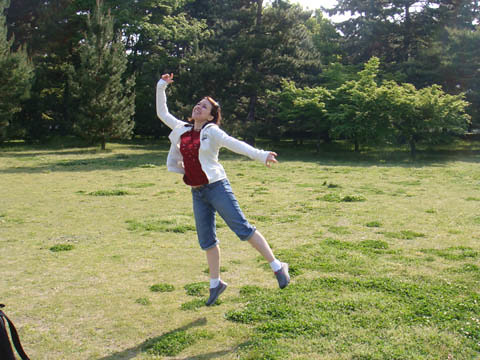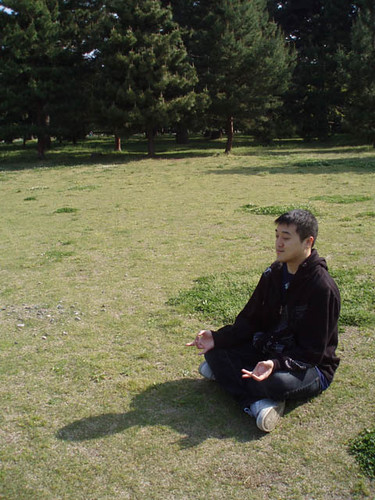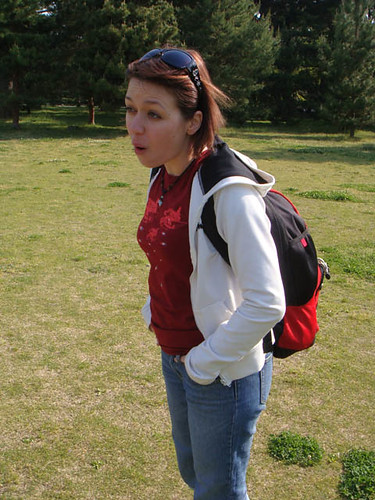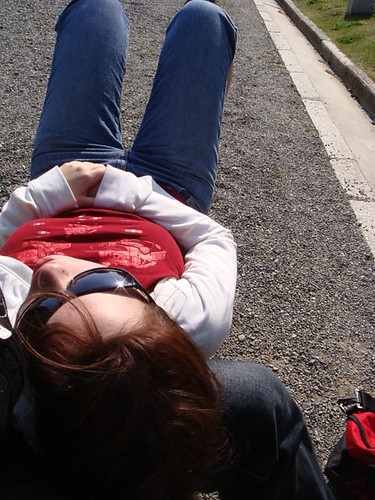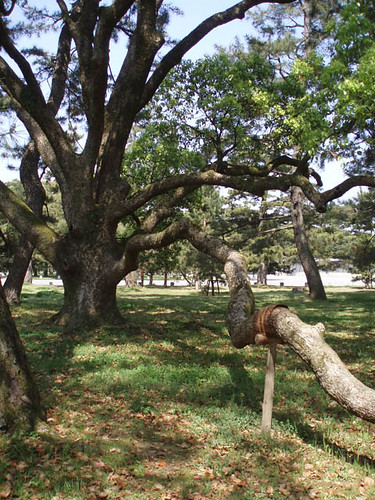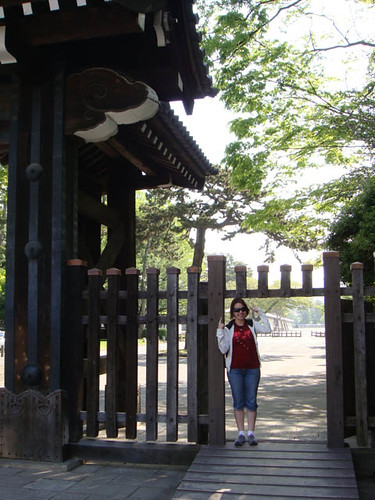Thursday, May 21, 2009
Tuesday, May 19, 2009
Japan overreacts. A lot.
In Japan people need to stay healthy because you don't get many sick days. So people often wear masks to keep from getting sick and/or spreading germs. It's a nice system that I'm not really allowed to partake in as a foreigner. That's okay with me...I bet they're horribly uncomfortable.
That all being said... The public or media or whomever decides that people are going to panic is a bit crazy here. I think this article sums up my feelings on the precautions against the swine flu.
The bottom line: I love Japan. Some things confuse the hell out of me. This is one of them.
That all being said... The public or media or whomever decides that people are going to panic is a bit crazy here. I think this article sums up my feelings on the precautions against the swine flu.
The bottom line: I love Japan. Some things confuse the hell out of me. This is one of them.
Sunday, May 17, 2009
A Smattering of Japanese Sauces
A little discussion of the sauces I have in my apartment. For some reason I find this a fascinating subject.
Saturday, May 16, 2009
Spryte and Moo Cow Backpack in Kyoto! Day 1: Restaurant Review
After a long trek around town we figured we'd earned a nice dinner. Aside from transportation, this was the largest expense during the trip. I figured it was a worthy expense, since I wanted to share this restaurant with Moo Cow.
梅の花 (Ume no Hana)
A restaurant that specializes in tofu, this chain is a great find. When you walk in, the friendly staff will greet you and direct you towards a private room where you'll be eating. It's a traditional Japanese-style interior so you'll be expected to take off your shoes at the door. Keep that in mind when choosing your footwear. Some of the rooms will have traditional setups without the sunken floor beneath the table, while others have it. It appears to depend on the restaurant, as each has slightly different decor.
First they'll offer you warm hand towels and ask what you'd like to order. The courses begin at ¥3600 for dinner and go up to ¥7000 or a little more if you choose from the seasonal courses. You can also order items a la carte, but the course menus are always the best deal in terms of variety for price.
We tried the nagomi, a standard course menu that costs ¥3600 and has 12 courses. Once you order, they bring you a small sheet copy of the menu. Again, this is only in Japanese, but it's still a fun little souvenir if you like food. They also explain each course as it comes to your table. From here on out I'll only be talking about the nagomi, since it's the course we had.
The first course was a trio of tofus. We were so hungry we forgot to take a photo before devouring it. Oops. One in particular caught my interest though, which was a ribbon-like tofu that tasted smoother than any tofu I've had anywhere else. As a whole the presentation was fantastic, with all three in small dishes served inside a presentation box. Beautiful and delicious.
Much to my excitement, the "ribbon-tofu" made a reappearance for our second course. As you can see, it was served in a lovely fan-shaped dish. The dipping sauce was soy-based and suited it perfectly.
At this point they brought one of our next courses early so it could simmer. It was mineral water and tofu simmered together to make a soup. Moo Cow noticed that the mineral water caused a breakdown of the tofu that would never happen with tap or bottled water. They placed this pot on the burner in the center of the table. I'd imagine some restaurants also bring burners because they aren't equipped with built-in ones.
The third course was one of my favorite Japanese dishes...茶碗蒸し (chawanmushi), or steamed egg pudding. It's a savory pudding with seafood, mushrooms and other items in it. This one of course had some kind of dumpling in the middle. The dumpling was no doubt made of soy, but it had the texture of the dango I love so much. Despite the hot weather I ate this with much happiness.
Following that was another course we forgot to photograph: 名物とうふしゅうまい(tofu shumai), or tofu dumpling. If you're familiar with gyoza, it's kind of like that but usually round and made with shrimp. These were served in wicker baskets usually used for Dim Sum. They contained shrimp (read: NOT vegetarian) and I believe the tofu was in the noodle wrapping, which was different from the usual because instead of being a large sheet noodle wrapped around the meaty center, it had shredded noodle pieces, as if the dumpling was rolled in it instead. Because of this it has a nice aesthetic. Fabulous dumplings, they were. I wish we'd remembered to take photos.
When they came to collect the plates from that course, they told us the soup was ready to eat. It was delicious. They told us we'd know when it was ready because the soup would become milky white. When they'd initially brought the soup they also gave us instructions that were in both Japanese and I believe English as well, although if I remember correctly the English was questionable. Nonetheless it was understandable and helpful. The soup was eaten mixed with soy sauce.
Next came a fish tempura. The batter was light, crunchy and not oily, while the fish was perfectly cooked so it fell apart in our mouths. We suspect the tofu in this course was in the tempura batter. Although at this point I was starting to question the use of tofu in every course. The tempura sauce for dipping also came with ground daikon to be mixed in, which you can see in the photo.
Perhaps the whole reason I remembered the restaurant from my previous trip was because of the next course. It also influenced my menu decision, as it involved this course. I don't know what these are, but Moo Cow said they're a common Chinese food I could buy in the US at an Asian market, although I wouldn't find the sauce. As you can see, I was too impatient to wait for the photo before nibbling on the corner of one...
A Japanese course menu wouldn't be complete without some kind of salad, so next was the tofu salad. It came stacked as in the photos and with instructions to mix it well before eating (we thought that was kind of obvious). The sauce was an interesting tangy sauce, although not an unfamiliar one. I'm pretty sure I've had it on salads in Japanese restaurants in the US before.
The final three non-dessert courses were served together. Most traditional Japanese course menus will end with a rice course. This one also served miso and an array of what are called pickles here. Pickles in Japan include anything that's been pickled and cut into pieces; the name is not just reserved for pickled cucumbers. I think I liked the dark purple ones the best.
Finally, we had our choice of three desserts. The first was strawberry ice cream, the second was a soy ice cream with kinako (soy powder) and molasses on it, and we didn't hear the third one because we emphatically chose the second choice. We'd had this dessert before at an "American Sushi" restaurant (called California Roll Sushi in Azabu Juban) and it was phenomenal. It was worth trying a soy-based ice cream as well. It was served with a pot of hot tea. It wasn't green tea or barley tea, but we aren't sure *what* kind of tea it was.
And here's a better photos of the ice cream itself...
At this point you can sit and chat over tea for as long as you like. Since we hadn't made a reservation we didn't have the luxury of hours, but we enjoyed our food thoroughly. Here's a little proof, I suppose...
And Moo Cow enjoyed his ice cream. Not sure if this was before or after I told him it wasn't dairy.
As you leave, if you particularly enjoyed any part of your meal, you can pick up some "souvenirs" or just munchies from a display near the register to take home with you. My first trip we got a tofu cheesecake that was to die for. Keep in mind these will be nominally priced, yet they are completely worth the cost.
All in all, this restaurant has a great atmosphere, friendly staff and fabulous food. The presentations are well-thought out and take the flavor into consideration; I'd expect nothing less from a nice Japanese restaurant. The price-to-quality ratio is great. I think this restaurant falls into low-key business meals, inexpensive dates and family special occasions (my first trip was for Grandma's birthday). It is a tofu restaurant, however, it is not vegetarian in nature. Perhaps the courses aren't even pescetarian, I'm not sure. If you like tofu I recommend trying this restaurant, but if you're vegetarian you'll be a bit limited. Overall, I hope you try it if you have the chance.
梅の花 (Ume no Hana)
A restaurant that specializes in tofu, this chain is a great find. When you walk in, the friendly staff will greet you and direct you towards a private room where you'll be eating. It's a traditional Japanese-style interior so you'll be expected to take off your shoes at the door. Keep that in mind when choosing your footwear. Some of the rooms will have traditional setups without the sunken floor beneath the table, while others have it. It appears to depend on the restaurant, as each has slightly different decor.
First they'll offer you warm hand towels and ask what you'd like to order. The courses begin at ¥3600 for dinner and go up to ¥7000 or a little more if you choose from the seasonal courses. You can also order items a la carte, but the course menus are always the best deal in terms of variety for price.
We tried the nagomi, a standard course menu that costs ¥3600 and has 12 courses. Once you order, they bring you a small sheet copy of the menu. Again, this is only in Japanese, but it's still a fun little souvenir if you like food. They also explain each course as it comes to your table. From here on out I'll only be talking about the nagomi, since it's the course we had.
The first course was a trio of tofus. We were so hungry we forgot to take a photo before devouring it. Oops. One in particular caught my interest though, which was a ribbon-like tofu that tasted smoother than any tofu I've had anywhere else. As a whole the presentation was fantastic, with all three in small dishes served inside a presentation box. Beautiful and delicious.
Much to my excitement, the "ribbon-tofu" made a reappearance for our second course. As you can see, it was served in a lovely fan-shaped dish. The dipping sauce was soy-based and suited it perfectly.
At this point they brought one of our next courses early so it could simmer. It was mineral water and tofu simmered together to make a soup. Moo Cow noticed that the mineral water caused a breakdown of the tofu that would never happen with tap or bottled water. They placed this pot on the burner in the center of the table. I'd imagine some restaurants also bring burners because they aren't equipped with built-in ones.
The third course was one of my favorite Japanese dishes...茶碗蒸し (chawanmushi), or steamed egg pudding. It's a savory pudding with seafood, mushrooms and other items in it. This one of course had some kind of dumpling in the middle. The dumpling was no doubt made of soy, but it had the texture of the dango I love so much. Despite the hot weather I ate this with much happiness.
Following that was another course we forgot to photograph: 名物とうふしゅうまい(tofu shumai), or tofu dumpling. If you're familiar with gyoza, it's kind of like that but usually round and made with shrimp. These were served in wicker baskets usually used for Dim Sum. They contained shrimp (read: NOT vegetarian) and I believe the tofu was in the noodle wrapping, which was different from the usual because instead of being a large sheet noodle wrapped around the meaty center, it had shredded noodle pieces, as if the dumpling was rolled in it instead. Because of this it has a nice aesthetic. Fabulous dumplings, they were. I wish we'd remembered to take photos.
When they came to collect the plates from that course, they told us the soup was ready to eat. It was delicious. They told us we'd know when it was ready because the soup would become milky white. When they'd initially brought the soup they also gave us instructions that were in both Japanese and I believe English as well, although if I remember correctly the English was questionable. Nonetheless it was understandable and helpful. The soup was eaten mixed with soy sauce.
Next came a fish tempura. The batter was light, crunchy and not oily, while the fish was perfectly cooked so it fell apart in our mouths. We suspect the tofu in this course was in the tempura batter. Although at this point I was starting to question the use of tofu in every course. The tempura sauce for dipping also came with ground daikon to be mixed in, which you can see in the photo.
Perhaps the whole reason I remembered the restaurant from my previous trip was because of the next course. It also influenced my menu decision, as it involved this course. I don't know what these are, but Moo Cow said they're a common Chinese food I could buy in the US at an Asian market, although I wouldn't find the sauce. As you can see, I was too impatient to wait for the photo before nibbling on the corner of one...
A Japanese course menu wouldn't be complete without some kind of salad, so next was the tofu salad. It came stacked as in the photos and with instructions to mix it well before eating (we thought that was kind of obvious). The sauce was an interesting tangy sauce, although not an unfamiliar one. I'm pretty sure I've had it on salads in Japanese restaurants in the US before.
The final three non-dessert courses were served together. Most traditional Japanese course menus will end with a rice course. This one also served miso and an array of what are called pickles here. Pickles in Japan include anything that's been pickled and cut into pieces; the name is not just reserved for pickled cucumbers. I think I liked the dark purple ones the best.
Finally, we had our choice of three desserts. The first was strawberry ice cream, the second was a soy ice cream with kinako (soy powder) and molasses on it, and we didn't hear the third one because we emphatically chose the second choice. We'd had this dessert before at an "American Sushi" restaurant (called California Roll Sushi in Azabu Juban) and it was phenomenal. It was worth trying a soy-based ice cream as well. It was served with a pot of hot tea. It wasn't green tea or barley tea, but we aren't sure *what* kind of tea it was.
And here's a better photos of the ice cream itself...
At this point you can sit and chat over tea for as long as you like. Since we hadn't made a reservation we didn't have the luxury of hours, but we enjoyed our food thoroughly. Here's a little proof, I suppose...
And Moo Cow enjoyed his ice cream. Not sure if this was before or after I told him it wasn't dairy.
As you leave, if you particularly enjoyed any part of your meal, you can pick up some "souvenirs" or just munchies from a display near the register to take home with you. My first trip we got a tofu cheesecake that was to die for. Keep in mind these will be nominally priced, yet they are completely worth the cost.
All in all, this restaurant has a great atmosphere, friendly staff and fabulous food. The presentations are well-thought out and take the flavor into consideration; I'd expect nothing less from a nice Japanese restaurant. The price-to-quality ratio is great. I think this restaurant falls into low-key business meals, inexpensive dates and family special occasions (my first trip was for Grandma's birthday). It is a tofu restaurant, however, it is not vegetarian in nature. Perhaps the courses aren't even pescetarian, I'm not sure. If you like tofu I recommend trying this restaurant, but if you're vegetarian you'll be a bit limited. Overall, I hope you try it if you have the chance.
Thursday, May 14, 2009
Monday, May 4, 2009
Spryte and Moo Cow Backpack in Kyoto! Day 1: The Botanical Gardens and Shopping District
Day 1: The Botanical Gardens and Shopping District
**note: all images (as well as additional ones) are also at flickr, with additional commentary, click on any photo to go to its flickr page if you want to make comments**
After leaving the Imperial Palace we headed towards the botanical gardens. We decided to cover the general central Kyoto area on the first day.It's a little bit north so we hiked up until we found some bridges crossing the river. But before we got there, I couldn't help but notice some nice plants people had on their doorsteps.
The botanical gardens. Entry fee: ¥200
The tickets at the botanical garden rotate monthly, meaning they have a different photo on them every month. Very cool.
And as we went in, they handed us a map also. Pretty nice maps, I must say.
Some shots from the trellis right by the entrance. I think Moo Cow took these while I was in the bathroom. They're so pretty!!!
As we continued, we noticed a bamboo garden. Hooray for bamboo! Moo Cow wanted to find the bamboo forest in Arashiyama, but he loves bamboo so we stopped here for a while to have lunch.
Bamboo shoots. Bamboo can grow up to 36" or so in a day in its natural habitat. We didn't stay long enough to watch this grow.
The tulip garden was fantastic. I loved the patchwork layout of it.
This fountain reminds me of a photo I took at MSU.
We took a goofy photo break. I don't usually do these kinds of photos but I enjoy seeing them when people post them.
After taking a nap in the grass under some shady trees we continued. Then we found these. Are there supposed to be palm trees here? I realized Okinawa is tropical, but Kyoto isn't. But then, maybe it has something to do with the fact that Okinawa *is* tropical. People don't usually realize that part of Japan is indeed tropical. Hmmm... We didn't see the tropical climate, although it was indeed pretty hot.
There was a lovely little area with a hut and a pond. There was a sign that said no photos so I had to snap them quickly. Unfortunately the water was a little dark. And then I tried again when we went around the way, but didn't have much more success. But you can see the white koi if you look hard.
The neat footbridges were scattered throughout. They remind me of Monet's Japanese footbridges. And well they should, I suppose.
There was a cool watermill near one of the footbridges. A photographer was on the other side of it, but I'm pretty sure my photo of the watermill turned out better. ^_~
And one more shot of the pavilion overlooking the koi pond. I really liked that place but there were too many people crowding in for my taste...and for my photo-taking rule-breaking...
I truly don't understand why anyone would sacrifice so many trees to support another one. This one in particular had a lot of trees sacrificed for it. There are others with very large, long trees that couldn't have been salvaged from deadwood. Makes me wonder.
Huh?
And some cool red clay tiles at the bottom of a stream. It's really quite interesting to observe the different solutions to "problems" that the Japanese as a whole come up with as opposed to "Western" solutions. It seems the Japanese solutions are usually more concerned with aesthetic, while American ones are based on costs, beauty be damned. Granted, this was a national garden so it might have made a difference...I've seen some pretty ugly solutions here too. And...*gasp* a tree stump. Looks like things do die in Japan. Don't be too shocked, heh.
As we left we saw a mountain with the kanji for big on it. We didn't know at the time that it was significant. We also saw it up close later but forgot to take photos. Oops.
While wandering towards our next destination, we found Moo Cow's shrine. Or at least it was a shrine to his brethren. Bwahaha. I made him pose with it.
Afterwards we went to dinner at a nice tofu restaurant, but that'll be covered in the restaurant review I'll be posting next. Once our bellies were full we meandered around town in hopes of finding something interesting before crashing. We then stumbled upon a (the?) shopping district.
There were shrines there too though. So many all over the place, but it's part of the charm in Kyoto.
And some more interesting English. This one's just an odd name for a shop.
The buildings aren't as tall as Tokyo, but that's to be expected.
And of course I found the arcades. They sold cute little fugu (blowfish) there, but oh man, I didn't wanna have to carry one around for the trip. Was so tired! Here's how one of them showed some of the walking prizes off...
And then we found what may have been the red light district. Lots of clubs and shady places. We later found out it was near Gion, but we didn't know that at the time. Not exactly, anyway.
Moo Cow was more interested in the waterways everywhere. We think they may have been a waste removal system a long time ago.
And then Kani Doraku. Not something special to Kyoto, but the signs don't usually move like this in Tokyo.
And here's a video of it!
**note: all images (as well as additional ones) are also at flickr, with additional commentary, click on any photo to go to its flickr page if you want to make comments**
After leaving the Imperial Palace we headed towards the botanical gardens. We decided to cover the general central Kyoto area on the first day.It's a little bit north so we hiked up until we found some bridges crossing the river. But before we got there, I couldn't help but notice some nice plants people had on their doorsteps.
The botanical gardens. Entry fee: ¥200
The tickets at the botanical garden rotate monthly, meaning they have a different photo on them every month. Very cool.
And as we went in, they handed us a map also. Pretty nice maps, I must say.
Some shots from the trellis right by the entrance. I think Moo Cow took these while I was in the bathroom. They're so pretty!!!
As we continued, we noticed a bamboo garden. Hooray for bamboo! Moo Cow wanted to find the bamboo forest in Arashiyama, but he loves bamboo so we stopped here for a while to have lunch.
Bamboo shoots. Bamboo can grow up to 36" or so in a day in its natural habitat. We didn't stay long enough to watch this grow.
The tulip garden was fantastic. I loved the patchwork layout of it.
This fountain reminds me of a photo I took at MSU.
We took a goofy photo break. I don't usually do these kinds of photos but I enjoy seeing them when people post them.
After taking a nap in the grass under some shady trees we continued. Then we found these. Are there supposed to be palm trees here? I realized Okinawa is tropical, but Kyoto isn't. But then, maybe it has something to do with the fact that Okinawa *is* tropical. People don't usually realize that part of Japan is indeed tropical. Hmmm... We didn't see the tropical climate, although it was indeed pretty hot.
There was a lovely little area with a hut and a pond. There was a sign that said no photos so I had to snap them quickly. Unfortunately the water was a little dark. And then I tried again when we went around the way, but didn't have much more success. But you can see the white koi if you look hard.
The neat footbridges were scattered throughout. They remind me of Monet's Japanese footbridges. And well they should, I suppose.
There was a cool watermill near one of the footbridges. A photographer was on the other side of it, but I'm pretty sure my photo of the watermill turned out better. ^_~
And one more shot of the pavilion overlooking the koi pond. I really liked that place but there were too many people crowding in for my taste...and for my photo-taking rule-breaking...
I truly don't understand why anyone would sacrifice so many trees to support another one. This one in particular had a lot of trees sacrificed for it. There are others with very large, long trees that couldn't have been salvaged from deadwood. Makes me wonder.
Huh?
And some cool red clay tiles at the bottom of a stream. It's really quite interesting to observe the different solutions to "problems" that the Japanese as a whole come up with as opposed to "Western" solutions. It seems the Japanese solutions are usually more concerned with aesthetic, while American ones are based on costs, beauty be damned. Granted, this was a national garden so it might have made a difference...I've seen some pretty ugly solutions here too. And...*gasp* a tree stump. Looks like things do die in Japan. Don't be too shocked, heh.
As we left we saw a mountain with the kanji for big on it. We didn't know at the time that it was significant. We also saw it up close later but forgot to take photos. Oops.
While wandering towards our next destination, we found Moo Cow's shrine. Or at least it was a shrine to his brethren. Bwahaha. I made him pose with it.
Afterwards we went to dinner at a nice tofu restaurant, but that'll be covered in the restaurant review I'll be posting next. Once our bellies were full we meandered around town in hopes of finding something interesting before crashing. We then stumbled upon a (the?) shopping district.
There were shrines there too though. So many all over the place, but it's part of the charm in Kyoto.
And some more interesting English. This one's just an odd name for a shop.
The buildings aren't as tall as Tokyo, but that's to be expected.
And of course I found the arcades. They sold cute little fugu (blowfish) there, but oh man, I didn't wanna have to carry one around for the trip. Was so tired! Here's how one of them showed some of the walking prizes off...
And then we found what may have been the red light district. Lots of clubs and shady places. We later found out it was near Gion, but we didn't know that at the time. Not exactly, anyway.
Moo Cow was more interested in the waterways everywhere. We think they may have been a waste removal system a long time ago.
And then Kani Doraku. Not something special to Kyoto, but the signs don't usually move like this in Tokyo.
And here's a video of it!
Spryte and Moo Cow Backpack in Kyoto! Day 1: Arrival and Imperial Palace
Day 1: Arrival and Imperial Palace
**note: all images (as well as additional ones) are also at flickr, with additional commentary, click on any photo to go to its flickr page if you want to make comments**
To get to Kyoto we decided to take the cheapest method possible; the night bus. The tickets were ¥4300 plus additional fees (anywhere from ¥500 to ¥2000) depending on peak times. Inside this flier there was a chart detailing the dates and fees, as well as departure times and locations, etc. Very useful, but only in Japanese, so not useful if you don't speak the language. Same thing for the people you call to make reservations; no English support.
Sorry the ticket back is a bit blurry...
Starting out was fun, although the bus could've been more comfortable, honestly we arrived in good shape. It was a bit chilly so we tried to keep moving in the wee hours. The McDonald's at the station wasn't open yet because we arrived before 6am.
Our first point of business was to make a game plan for the day and eat some food. Moo Cow had the good foresight to bring his LonelyPlanet guidebook for Japan. It came in pretty handy.
Once we figured out a basic outline of our day we headed north. For the first day we decided we wanted to see the Imperial Palace. In all it was rather disappointing, but that's to be expected of something that isn't in use anymore, heh. On our way there we saw the first of many temples.
Higashi Honganjii is a temple of a branch of Pure Land Buddhism. Here's the blurb from the plaque that was in a bunch of languages...
The is the mother temple of the Shinshu Otani-ha, a branch of Pure Land Buddhism, called Shinshu Hombyo, generally known as Higashi (East) Hoganji to distinguish it from Nishi (West) Honganji. Honganji originates from the time when Kakushin-ni, the youngest daughter of founder Shinran (1173-1262) built a mausoleum at Higashiyama Otani to enshrine her father's portrait in 1272. In 1591, Kennyo, the 11th abbot of Honganji, received land from Toyotomi Hideyoshi and built a temple (now Nishi Honganji)in Shichijo Horikawa. However, in 1602, Tokugawa Ieyasu donated this site in Karasuma Rokujo, where Kyonyo, the 12th abbot, constructed another temple complex. Thus, Honganji was divided into two major branches. The present temple halls were rebuilt in 1895, during the Meiji period. The Goei-do (Founder's Hall), in which the image of Shinran is kept, is one of the largest wooden buildings in the world.
It was early so it wasn't actually all that interesting/busy, plus there was construction inside...but there was a cool fountain across the street.
And a small nifty shrine on the way too. I don't know what my obsession is with these little shrines, but they're all over Japan.
Some of the Engrish here is amazing. Would you like some morning scorn?
We then went to the Imperial Palace, like I said. It was quite a trek to get there. Since this was supposed to be a very cheap trip we decided to walk everywhere. Yep. Tiring though, jeez.
We saw some grass. It was super exciting...since Tokyo seems to lack this stuff...
So I hopped around.
...and Moo Cow meditated.
I saw a tree I really wanted to climb. Didn't do it though...didn't need to get arrested.
Moo Cow took photos of me as I napped on a bench (and his lap, oops).
Trees can't support themselves, obviously.
Short doorways. Not sure why this door is so short, but it's my height perfectly. Moo Cow suggested I'm about as tall as the Japanese people who built it. I think it has more to do with having to bow to get into the gate.
And that's it's for the first installment of day 1. Next up is the botanical gardens. ^_^;
**note: all images (as well as additional ones) are also at flickr, with additional commentary, click on any photo to go to its flickr page if you want to make comments**
To get to Kyoto we decided to take the cheapest method possible; the night bus. The tickets were ¥4300 plus additional fees (anywhere from ¥500 to ¥2000) depending on peak times. Inside this flier there was a chart detailing the dates and fees, as well as departure times and locations, etc. Very useful, but only in Japanese, so not useful if you don't speak the language. Same thing for the people you call to make reservations; no English support.
Sorry the ticket back is a bit blurry...
Starting out was fun, although the bus could've been more comfortable, honestly we arrived in good shape. It was a bit chilly so we tried to keep moving in the wee hours. The McDonald's at the station wasn't open yet because we arrived before 6am.
Our first point of business was to make a game plan for the day and eat some food. Moo Cow had the good foresight to bring his LonelyPlanet guidebook for Japan. It came in pretty handy.
Once we figured out a basic outline of our day we headed north. For the first day we decided we wanted to see the Imperial Palace. In all it was rather disappointing, but that's to be expected of something that isn't in use anymore, heh. On our way there we saw the first of many temples.
Higashi Honganjii is a temple of a branch of Pure Land Buddhism. Here's the blurb from the plaque that was in a bunch of languages...
The is the mother temple of the Shinshu Otani-ha, a branch of Pure Land Buddhism, called Shinshu Hombyo, generally known as Higashi (East) Hoganji to distinguish it from Nishi (West) Honganji. Honganji originates from the time when Kakushin-ni, the youngest daughter of founder Shinran (1173-1262) built a mausoleum at Higashiyama Otani to enshrine her father's portrait in 1272. In 1591, Kennyo, the 11th abbot of Honganji, received land from Toyotomi Hideyoshi and built a temple (now Nishi Honganji)in Shichijo Horikawa. However, in 1602, Tokugawa Ieyasu donated this site in Karasuma Rokujo, where Kyonyo, the 12th abbot, constructed another temple complex. Thus, Honganji was divided into two major branches. The present temple halls were rebuilt in 1895, during the Meiji period. The Goei-do (Founder's Hall), in which the image of Shinran is kept, is one of the largest wooden buildings in the world.
It was early so it wasn't actually all that interesting/busy, plus there was construction inside...but there was a cool fountain across the street.
And a small nifty shrine on the way too. I don't know what my obsession is with these little shrines, but they're all over Japan.
Some of the Engrish here is amazing. Would you like some morning scorn?
We then went to the Imperial Palace, like I said. It was quite a trek to get there. Since this was supposed to be a very cheap trip we decided to walk everywhere. Yep. Tiring though, jeez.
We saw some grass. It was super exciting...since Tokyo seems to lack this stuff...
So I hopped around.
...and Moo Cow meditated.
I saw a tree I really wanted to climb. Didn't do it though...didn't need to get arrested.
Moo Cow took photos of me as I napped on a bench (and his lap, oops).
Trees can't support themselves, obviously.
Short doorways. Not sure why this door is so short, but it's my height perfectly. Moo Cow suggested I'm about as tall as the Japanese people who built it. I think it has more to do with having to bow to get into the gate.
And that's it's for the first installment of day 1. Next up is the botanical gardens. ^_^;
Subscribe to:
Comments (Atom)
